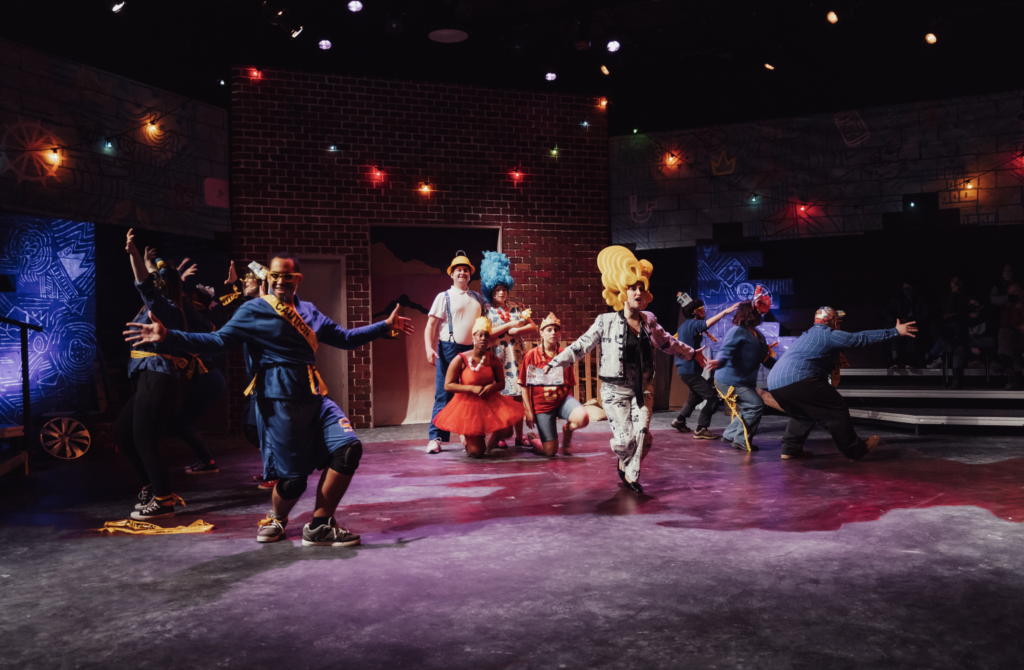
ETHAN TOZER
Special to The Leader
In a theoretical world without electricity, any survivors must find a way to live.
“Mr Burns: A Post-Electric Play,” directed by Daniel Lendzian, is a show unlike many have seen before in a theatre.
With the thought of radiation poison hot on everyone’s minds, a few people who seek refuge together find that trying to retell an episode of the TV show, “The Simpsons,” is helping to take their mind off what has been occurring in their part of the world.
This three-act play was performed in the “black box” Bartlett Theatre in the Rockefeller Arts Center, which allows for actors to have a more intimate performance with the audience. This contributes to stellar sets and intricate costumes because the audience is able to see a more detailed view of what is on the stage.
The view of a barrel with a light inside to show the warmth of a fire and a jeweled glove with claws are some of the details that show the TADA department put in an enormous amount of work to make this production an interesting and distinctive addition to The Walter Gloor Mainstage Series.
The plot of the show lends itself to having costumes that are very detailed and engaging. The costumes were designed by Madison Granger, a BFA theatrical production and design major with a concentration in costuming.
The first act had very simplistic costumes that look like rundown, everyday clothing worn in the 21st century. The costumes during act two are fairly similar to those in act one but have a cleaner look. The second act occurs seven years after the first act, so it makes sense that the characters have had time to get better clothes.
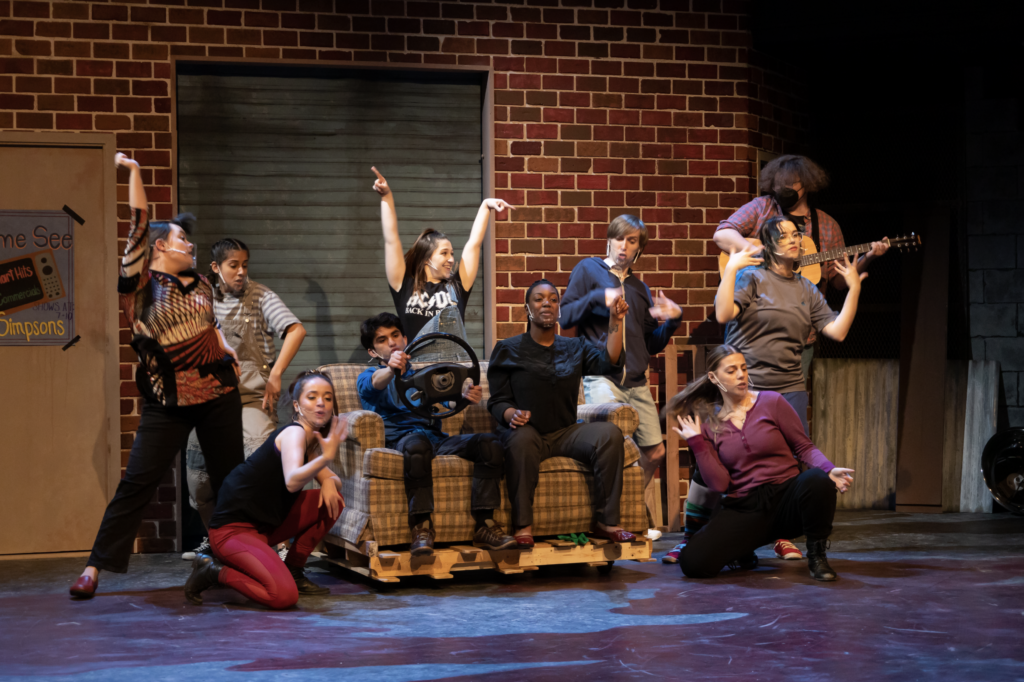
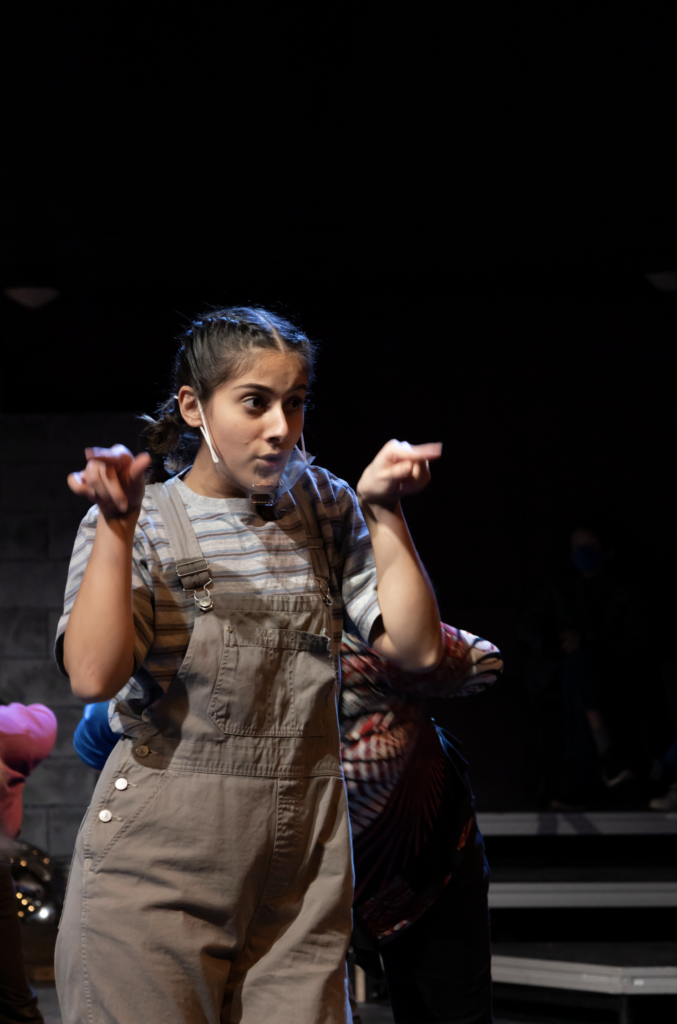



The third act showed a musical production of the same episode of “The Simpsons” that was being reminisced about during the first and second acts. The setting jumped 75 years in the future from the first act. This allows for more of a “futuristic” design of the costumes. The set is made up of found objects, which are materials that the characters were able to come across, due to the electric grid and nuclear power plant failures.
One of the many costumes that stood out in the third act is character Edna Crabappel’s suit made entirely out of a newspaper print and a large yellow foam wig. The mismatched buttons stick out particularly because they are all found items. Little details like these could be seen in all the costumes during the third act when observing closely.
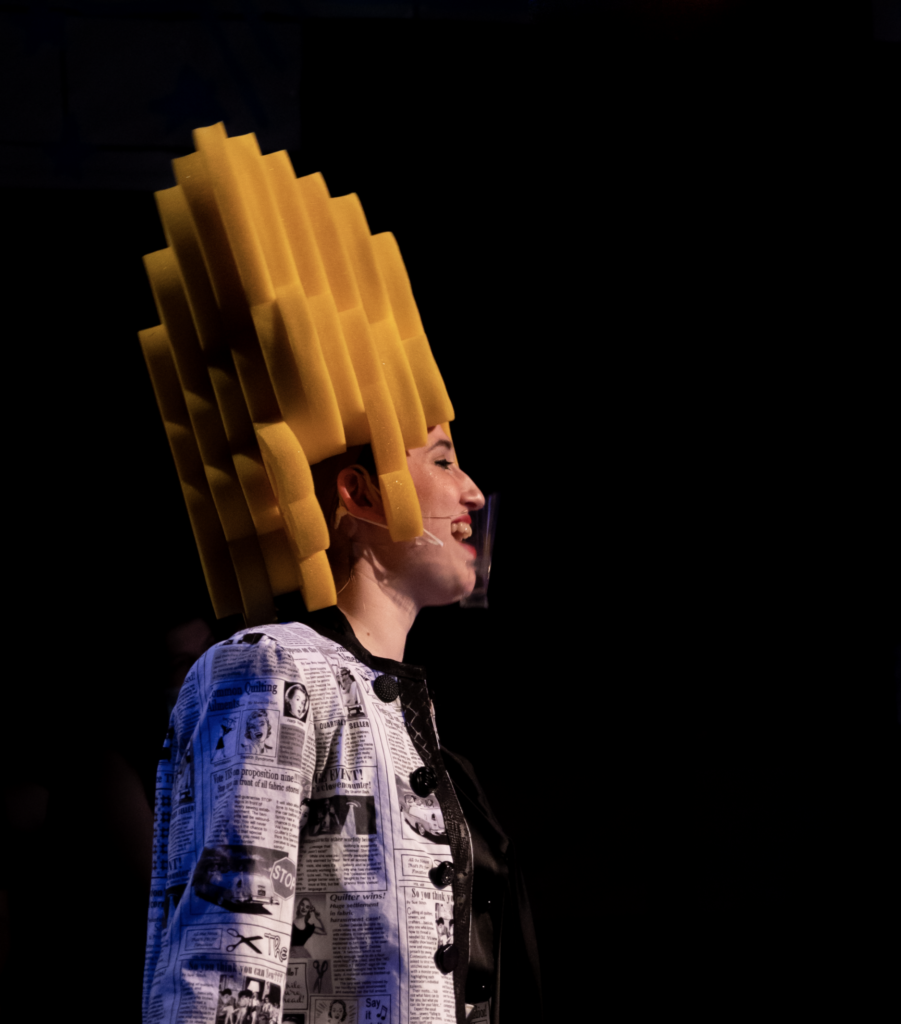




The sets were designed by Karlie Robinson, senior BFA theatrical production and design major. Like the costumes, an extreme amount of research went into the design of the set in this production. This is evident in the way the set-piece is able to change in between acts and on stage to forward the timeline of the production.
During the first act, the set-piece looks like a run-down building. During the second and third act, it transfers to a set-piece on a stage for rehearsals of the episode that are performed. This was very smart on the design team’s part because they did not have to have multiple set-pieces that would have to be changed during intermission.
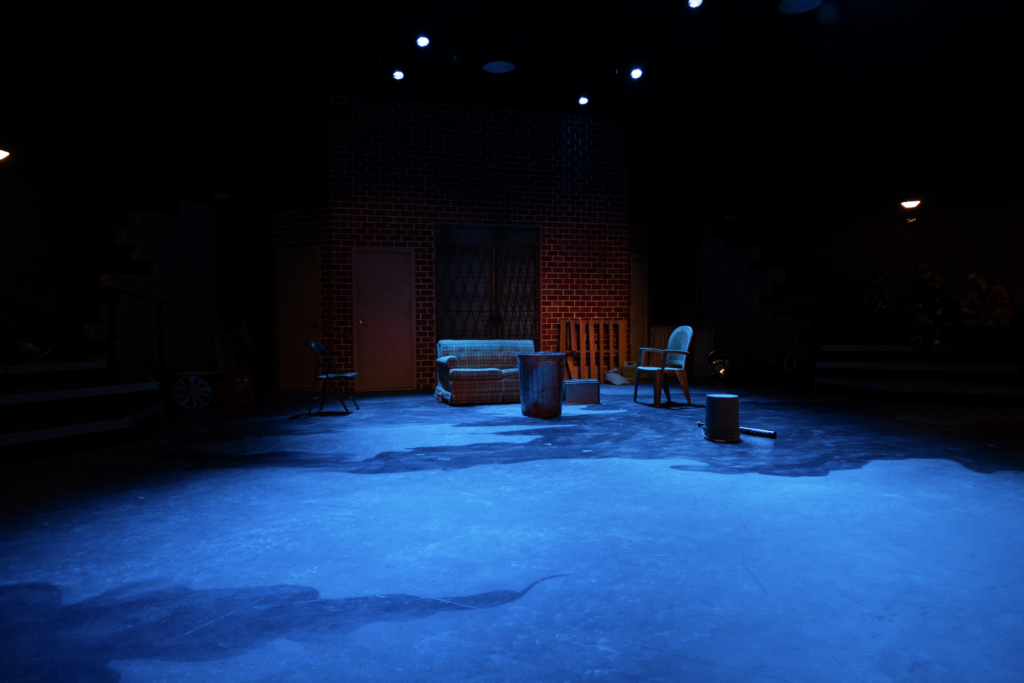
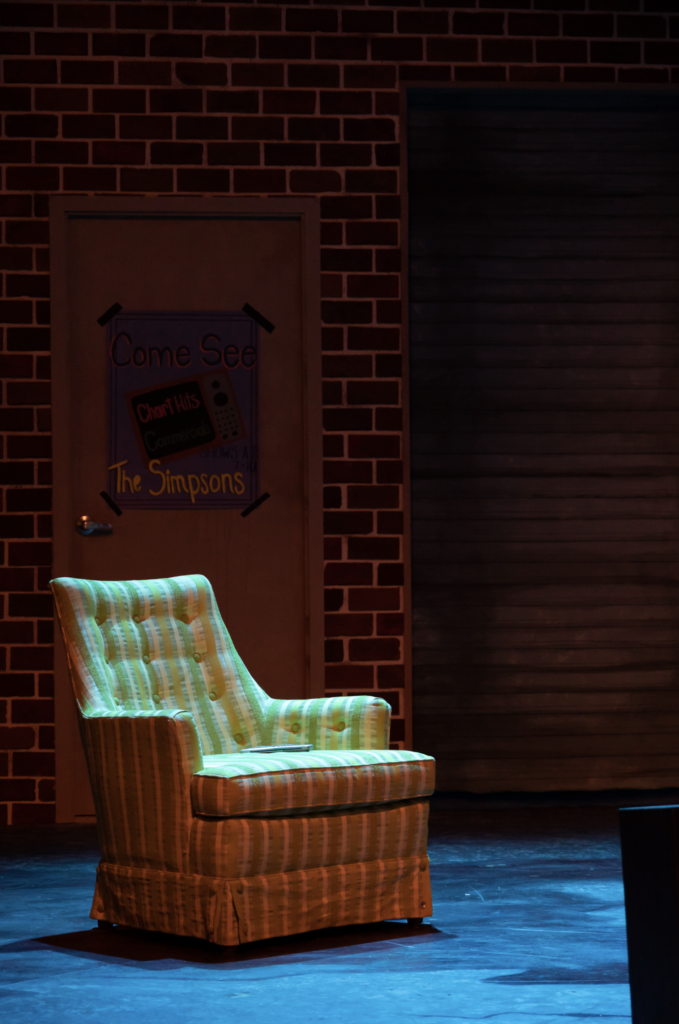



The third act specifically had some fascinating changes. During the first few minutes of this act, panels of fabric are thrown down from the sides of the theatre and above the audience’s heads to create a new setting for this final performance. Many different pop culture references can also be found on these panels.
During this act, the main piece produces a top part of a boat through it’s door. This “boat” becomes even more effective through movements the actors used to show the swaying of the water. There were also ropes tied to posts and a plank going off one of the ropes. These details made the set more believable while still making the audience think they are still watching a musical inside of the production.
While the acting was stellar and there were some amazing technical elements, some of the parts of the play were also a little bit confusing. At the end of the second act, everything stops and all of the characters look at the corner in fright. There is some short dialogue, but it was a stark contrast from what was just occurring during the entire second act. Choosing to have the characters stare at the corner did not help either because there was nothing there to help the audience know what was going on.
The first act started off very slow and did not seem to pick up. However, the actors did a tremendous job using the script to their advantage where they could try to make the first act more interesting to the audience.
While the first act was fairly slow, the second act picked up slightly after the intermission. What made act two somewhat confusing though, was that all of the characters were being played by different people while having the same names of those in act one.
Overall, this show was very interesting to see.
To learn of future Department of Theatre and Dance and Performing Arts Company productions, visit the Walter Gloor Mainstage page on the Fredonia website.

